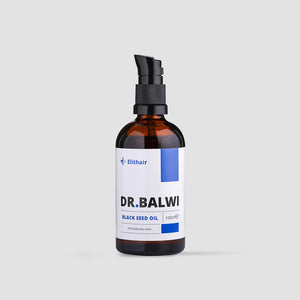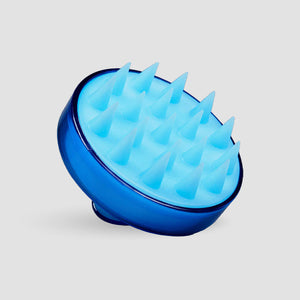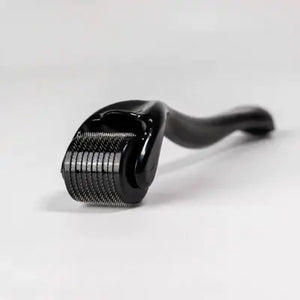
Hair loss with root
Generally, if you experience increased, diffuse hair loss, you don't need to immediately worry about going completely bald. In most cases, alopecia is harmless, and hair will regrow once the underlying factors are eliminated. However, if the roots are damaged and you are experiencing hair loss with roots, new hair growth will not be possible on the affected areas of your head. Your thick hair growth has a positive effect on your self-confidence, so a full head of hair is naturally an important feature of your attractiveness. When hair growth decreases, most people also experience a decrease in their emotional well-being and their enjoyment of social interactions. This makes it all the more important that you determine the cause of the hair loss and take action against the feared baldness.
Table of contents
- Different types of hair loss with root
- What causes hair roots to be damaged and die
- For hair loss with roots, a hair transplant can help
- Conclusion: Hair loss, including the hair root, is not reversible!
Different types of hair loss with root

Scarring, for example from burns or accidents, can lead to hair loss including the roots.
- In these cases, the follicles in the affected area are so severely damaged that they atrophy and fall out.
- But long-term hormonal disorders, immune system disorders or scalp diseases can also lead to complete hair loss, including the roots.
- Root-included hair loss can occur in diffuse and circular forms.
- Genetic hair loss also results in the death and subsequent loss of hair roots, leading to bald patches on the top of the head or at the receding hairline.
- With "normal" hair loss, the hair grows back because the root itself isn't affected. If this root falls out long before the original interval between the three hair phases, it inevitably leads to baldness.
Fungal infections and inflammation cause hair loss including follicles
Scalp inflammation and scalp fungi are very dangerous. In both cases, you can protect yourself from complete baldness with early diagnosis. While the need for treatment in the case of alopecia areata can be recognized relatively early, diffuse hair loss is usually only taken seriously when it is more severe and lasts longer. However, with scalp inflammation and skin fungi, as well as problems with the immune system, hair loss can occur not only in circular patterns, but also in diffuse patterns. To avoid complete destruction of the hair roots and prevent hair loss with roots, the cause should be diagnosed and treated as early as possible. If your hair is becoming increasingly thinner and your scalp itches, burns, or feels tight, it is often a fungal infection. Close contact with pets, especially cats, increases the risk. The risk of infection should not be underestimated, and as much as you enjoy cuddling with your pet, you should keep an eye on your health and the health of your animal.
Nutrient-induced alopecia in focus
Iron deficiency leads to hair loss at the roots. The sooner you counteract the effects of deficiency symptoms, the higher the chances that "only" your hair and not the follicle segment will fall out. To cause irreparable damage to the hair roots, the deficiency must continue to work in your body for a longer period of time and remain undetected. In addition to internal influences, you should also not underestimate the danger of external influences. The more frequently and for longer periods you expose yourself to unprotected sunlight, for example, the greater your risk of irreversible hair loss. If harmful substances penetrate your scalp and thus the hair roots over the long term, this can also be a cause of permanent hair loss. Just as risky as the undersupply of important minerals and nutrients, as well as trace elements and vitamins, to the hair roots is a lack of oxygen. Circulatory disorders lead to a reduced supply to the hair follicles and ultimately to their weakening and even hair loss.
What causes hair roots to be damaged and die
All of the causes listed above are essentially responsible for permanent hair loss at the root. To rule out this problem, you should never focus on the symptom itself when it comes to hair loss.
- Examine the circumstances and find out when and in what context increased hair loss was noticed.
- If your scalp is exposed to high levels of pollution and is simultaneously deprived of nutrients and oxygen, hair loss will occur, including the roots.
- You cannot completely protect yourself from environmental toxins.
- Therefore, the comprehensive care of your hair follicles plays a paramount role and requires the utmost attention.
- You can recognize hair root problems long before you lose your hair because your hair becomes duller and difficult to style.
- If you react at this stage, you can reverse the damage to the follicles and avoid total hair loss.
For hair loss with roots, a hair transplant can help
As much as you might like to hear otherwise, there's no cure for hair loss, including the roots. A hair transplant is the only way to introduce new follicles into bald areas and encourage new hair to grow. If the hair roots have fallen out or are damaged to the point of death, they cannot produce new hair. The faster you investigate the cause and treat it, the sooner you can have your own hair transplanted and fill in the bald areas. For a hair transplant, living follicles are removed from the donor area and then transplanted into the recipient area. After six months at the most, new hair will grow in the previously bald areas.
Conclusion: Hair loss, including the hair root, is not reversible!
If you suffer from hair loss at the root, it is an irreversible and permanent form of hair loss. Hair growth products or dietary changes will not be successful at this time and in this initial situation. A hair transplant is helpful and allows hair to grow back where, without this minimally invasive procedure, only baldness would be visible. Irreparable root damage always has a cause. This must be diagnosed and treated before a hair transplant. Scalp fungi, inflammation, deficiencies, and pollutants in particular cause irreversible hair loss and cause the hair and follicles to fall out.




















